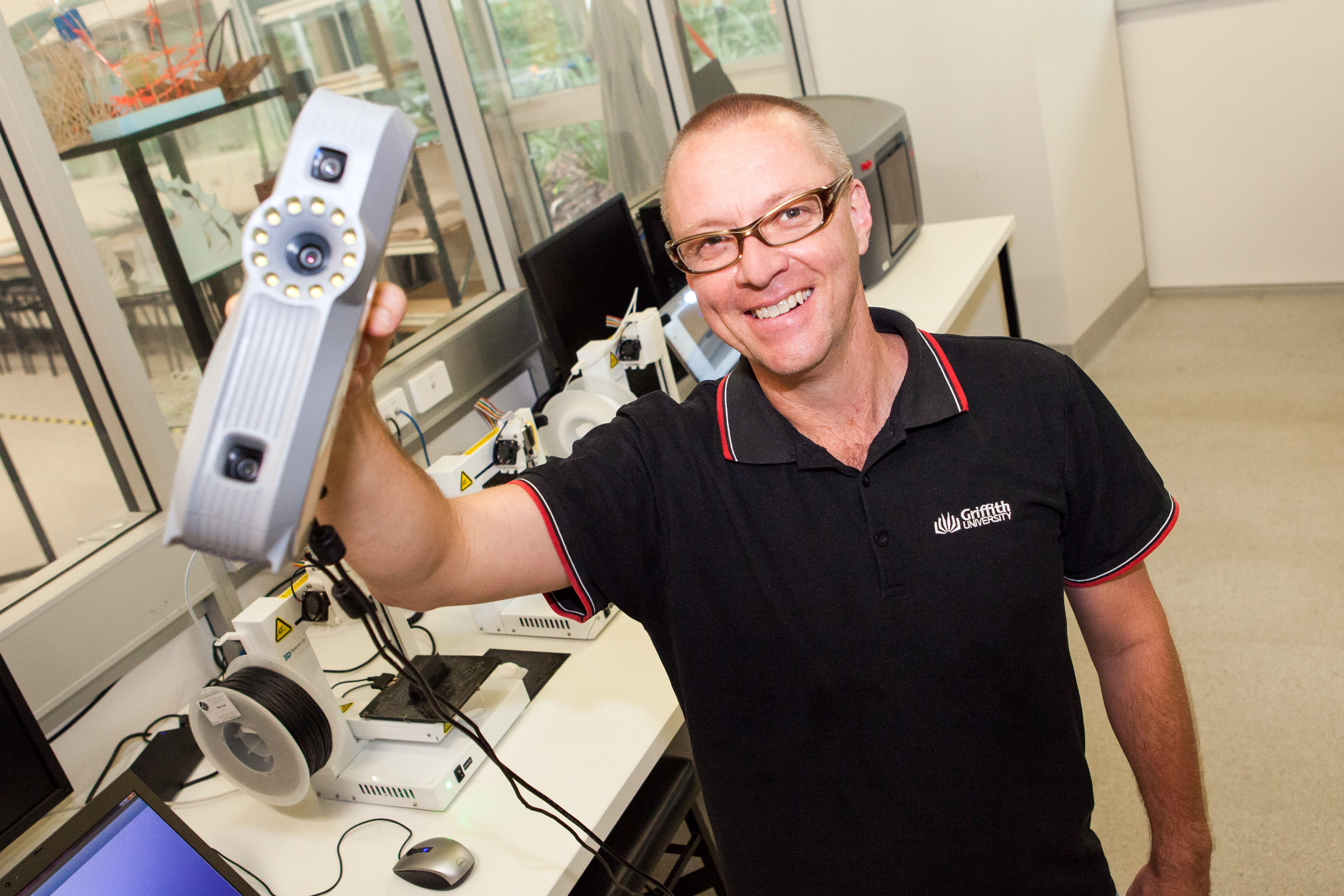The rapid and detailed scanning of metals is not new, however taking this technology into the field and away from highly controlled labs could help protect the integrity of everything from aeroplanes to military vehicles. Scientists from griffith University on the Gold Coast have refined a system involving high-resolution 3D scanning of moving metal assets in which a tiny changes could indicate metal fatigue or interference. And it’s all thanks to biomechanics.
One of the essential techniques of biomechanics is the regular scanning of the human body to pick up small changes that point to future injuries. Now two Griffith University researchers are applying the same 3D reality capture techniques to machines to improve the safety, endurance and resilience of vehicles.
In sport, biomechanics has been attaching omni-directional scanning points to athletes and invalids alike to scan and measure not only the state of the persons bones, muscles and tendons, but how they move together and how they could move better to eliminate pain or inefficiency.
PhD candidate Chris Little and biomechanics researcher Dr David Saxby are pioneering a system of inexpensive 3D data scanners that can detect minute changes in an asset in close to real time. Their system could dramatically improve the safety of vehicles in which the detection of tiny changes could save hundreds of lives. It could also be used to safely scan suspicious vehicles for dangerous goods, alterations or passengers.
“Called PEPI, the spark for the creation of the structure came after work by Mr Little onsurviving WW1 machinerysomehow crossed paths with Dr Saxby’s development ofbiomedical systems in the School of Allied Health Sciences. Understanding that innovation lay in the broad application of powerful technology at a lower cost, they developed their transportable and extensible system.
“Most of what has gone into PEPI is the innovative application of simple technologies,” said Dr Saxby.
“This kind of setup can already be found in laboratories or specialist workshops, but its actually less detailed, lower quality, and dependent on maintaining its static place in a controlled environment. PEPI can be taken into the field and modified for the material or object in question, and can even be used contrast the image or model with a digital twin. This is essential for tracking structural changes, damage or surface wear on critical pieces of equipment, but similar approaches can be applied to human bodies.
“My field is biomechanics and we’ve been imaging the outer hulls and internal anatomy for some time, that this has not been applied to machines was a bit strange for me. When Chris told me how he went about scanning a vehicle and we swapped ideas we realised we had a lot we could exchange.”
Mr Little’s research focuses on 3D scanning to create a complete and accurate data set of forensic crime scenes and heritage . His work on a WW1 era German tank called Mephisto, dragged back to Australia by a Queensland battalion as a trophy, was featured at the World Science Expo in 2017. Mr Little is developing an interactive virtual display of the tank, moving it back into its original position in Villers-Bretonneux and using advanced forensic software and GPS technology to create a ballistic analysis.
“The whole scanning of Mephisto was a long process, just the truck alone took two full days to get to every part of it,” he said.
Mr Little’s high profile work drew him to the attention of the Griffith Biomedical team lead by Professor David Lloyd, whose work in injury prevention with Australia’s highest profile athletes has made him a leader in 3D image scanning a diagnostics. Dr Saxby was part of this team and knew he could speed up the process to real time.
“When we went into the market to see what was being done and what was on offer, we quickly realised there were opportunities everywhere for applying the knowledge from one part of the 3D imaging sector to the other,” said Mr Little.
A military application could includescanning a combat asset before it is introduced to battle and making it a “control”. Assets that have experienced combat often return with damage, parts missing etc and the unit could use the system, in the field, to rescan these assets after combat, comparing asset in full 3D and showing a colour coded change of information compared with the control (non-damaged asset). Any areas of interest, or risk, alterations, missing (or added) accessories to existing combat vehicle can found and fixed before it re-enters the battlefield.
PEPI is still at its prototype stage, but the team at Griffith believe the system is ready for scale investment and could have significant applications for many industries from aviation to defence and automotive and construction.
